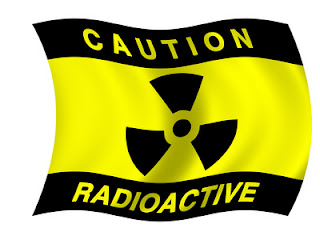Japan's nuclear crisis appeared to be spinning out of control on Wednesday according Reuter News after workers withdrew from a damaged power plant because of increasing radiation levels and a helicopter could not drop water on the most effected reactor.
In a sign of desperation, the police will try to cool spent nuclear fuel at one of the facility's reactors with water cannon, which is normally used to quell riots.
Early another fire broke out at the earthquake-crippled facility, which has sent low levels of radiation that drifted to Tokyo in the past 24 hours, triggering fear in the capital and international alarm.
Japan's government announced that radiation levels outside the plant were stable but, appealed to private companies to help deliver supplies to tens of thousands of people evacuated from around the complex.
About 140,000 people inside the zone have been told to stay indoors.
Workers were trying to clear debris to build a road so fire trucks could reach reactor No. 4 at the Daiichi complex in Fukushima, 240 km (150 miles) north of Tokyo. Flames were no longer seen at the building housing the reactor.
A man is scanned for nuclear exposure close to the damaged Daiichi reactors
High radiation levels prevented a helicopter from flying to the site to drop water into the No. 3 reactor -- whose roof was damaged by an earlier explosion and where steam was seen rising earlier in the day -- to try to cool its fuel rods.
The plant operator described No. 3 as the "priority." No more information was available, but that reactor is the only one at Daiichi which uses plutonium in its fuel mix.
According to U.S. government research, plutonium is very toxic to humans and once absorbed in the bloodstream can linger for years in bone marrow or liver and can lead to cancer
The situation at No. 4 reactor, where the fire broke out, was "not so good," the plant operator added, while water was being poured into reactors No. 5 and 6, indicating the entire six-reactor facility was now at risk of overheating.
Nuclear experts said the solutions being proposed to quell radiation leaks at the complex were last-ditch efforts to stem what could well be remembered as one of the world's worst industrial disasters.
"This is a slow-moving nightmare," said Dr Thomas Neff, a physicist and uranium-industry analyst at the Massachusetts Institute of Technology.
At the Fukushima plant, authorities have spent days desperately trying to prevent water which is designed to cool the radioactive cores of the reactors from evaporating, which would lead to overheating and possibly a dangerous meltdown.

smoke ascends
S
Smoke comes out of reactor 3 after an explosion on march 14, 2011
Until the heightened alarm about No.3 reactor, concern had centered on damage to a part of the No.4 reactor building where spent rods were being stored in pools of water, and also to part of the No.2 reactor that helps to cool and trap the majority of cesium, iodine and strontium in its water.
Japanese officials said they were talking to the U.S. military about possible help at the plant.
Concern has mounted that the skeleton crews dealing with the crisis might not be big enough or were exhausted after working for days since the earthquake damaged the facility. Authorities withdrew 750 workers on Tuesday, leaving only 50.
All those remaining were pulled out for almost an hour on Wednesday because radiation levels were too high, but they were later allowed to return.
Nuclear radiation is an especially sensitive issue for Japanese following the country's worst human catastrophe -- the U.S. atomic bombs dropped on Hiroshima and Nagasaki in 1945.




